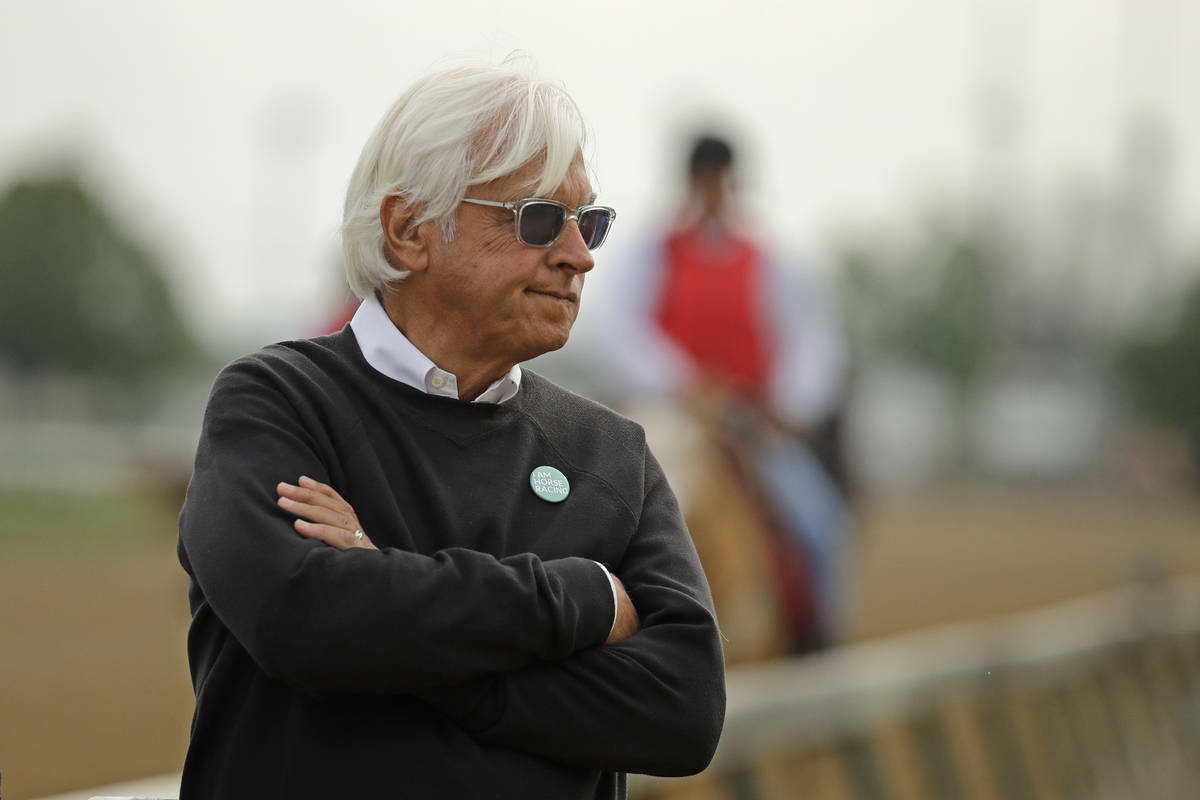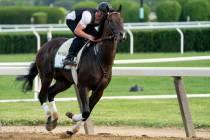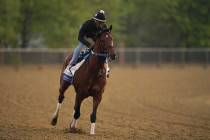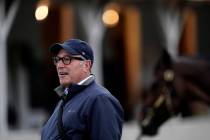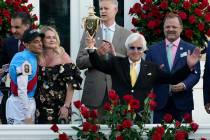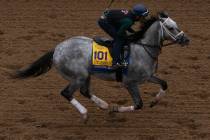Los Alamitos gets shot in arm from COVID pandemic
Many horseplayers I know plan their vacations around the winter meetings at Los Alamitos. Not so they can attend the races at the lesser track on the Southern California circuit but so they can relax in a hammock somewhere warm, knowing they won’t miss much while they are gone.
Sure, Bob Baffert may debut a 2-year-old prospect or two, but they’ll be seen soon enough at Santa Anita. So my napping pals rest easy, knowing they’re missing lots of tired horses, short fields and even shorter prices at the 61-year-old bullring in Orange County better known for quarter horse racing.
But when they awake this time, are they going to be surprised.
This being the year when everything has been turned upside down, “Los Al,” as it is commonly known, is putting on quite a show during the 11-day winter thoroughbred meeting that ends Sunday, in part because of the coronavirus.
Management at Golden Gate Fields closed the Bay Area track Nov. 13 after upward of 200 track employees tested positive for COVID-19. The closure was initially intended to last a week, but was extended several times before track officials finally said they wouldn’t resume racing until Dec. 26.
That left a lot of Golden Gate horses that don’t fit with the tougher competition at Del Mar with nowhere to run except Los Alamitos. Trailers were loaded and were soon headed south.
The difference is easy to see: This year, Los Al is averaging 8.65 starters per race, a huge improvement over the 7.07 seen last year.
The infusion of new talent has been good for the handicapper, creating intriguing handicapping puzzles and amply rewarding those who successfully solve them.
It has also boosted the handle, though not as much as I would have expected: After 60 races, it’s up just over 2 percent year over year to $37.32 million. Still, that’s not half-bad in the current economic climate and without any in-person wagering.
So if you’re freshly awakened from your long winter’s nap, you might want to check out the Los Alamitos signal at your favorite socially distanced sportsbook Friday through Sunday. It’s a great way to show the powers that be you enjoy full fields of evenly matched horses.
Weekday cards begin at 12:30 p.m., while the gates for the first race are sprung at noon on weekends.
Los Alamitos Futurity
Sadly, the star attraction of the meeting — the $200,000 Los Alamitos Futurity (Grade 2) on Saturday — did not benefit from the population surge at the track, with just six entries lining up for the 7-furlong race for 2-year-olds with higher aspirations down the Triple Crown trail.
The even-money morning line favorite is Red Flag, easy winner of the Grade 3 Bob Hope Stakes at Del Mar in his last start. Trained by John Shirreffs, the son of Tamarkuz will be ridden by Victor Espinoza and break from the rail.
It will be interesting to see how the betting goes, as Baffert, who has won this race the last six times it’s been run and 12 times overall, will be saddling a horse named Spielberg. Co-owners SF Racing, Starlight Racing, Madaket Stables clearly had high expectations for the son of Union Rags when they shelled out $1 million for him at the Keeneland September sale, but he was among the five horses trounced by Red Flag in the Bob Hope.
Given Baffert’s dominance of this race, however, and the presence of elite Southern California rider Flavien Prat in the saddle, the bettors might decide to make Spielberg, the 5-2 second choice on the morning line, the favorite by the time the gates are sprung.
Another reason to watch is the presence of Hall of Fame jockey Mike Smith, who will be riding the gelding Petruchio (4-1) for fellow Hall of Famer Richard Mandella. Smith will be making one of his first starts since testing positive for COVID-19 on Nov. 29 and serving quarantine.
Mike Brunker’s horse racing column appears Fridays. He can be reached at mbrunker@reviewjournal.com or 702-383-4656. Follow @mike_brunker on Twitter.
Ellis Starr's Springboard Mile analysis
Outadore was fairly impressive winning the first two starts of his career, including the Juvenile Turf Sprint in a field of 10 in September. After earning a 91 Equibase Speed Figure for that win, Outadore stretched out to a mile on grass for the Breeders' Cup Juvenile Turf and ran very well as he led early and was beaten just a neck for the runner-up spot as the winner drew off by three lengths. That effort was a career-best and field high 109 figure. Although all three of his career races to date have been on turf, I see no reason Outadore won't run as well on dirt as a son of Outwork, who is by exceptional sire Uncle Mo. On the dam's side of his pedigree, two of the dam's other foals have run very well in dirt routes, including Piedi Bianchi, who has earned over half a million dollars. With blinkers off to help him relax and a very strong 5 furlong workout on dirt coming into this race, plus with the ability to be sitting in second or third position early off likely early leader Saffa's Day, Outadore has a big shot to win the Remington Springboard Mile Stakes at Remington Park and put his name in the hat as an early Derby contender.
Cowan will likely have to deal with more traffic than Outadore as he routinely comes from much farther back in the pack but other than that he has a strong probability to compete effectively. In the Juvenile Turf Stakes won by Outadore in September, Cowan rallied nicely but too late when third in new blinkers, then next out rallied fast once again, this time for second in the Indian Summer Stakes. Staying around one turn for the Breeders' Cup Juvenile Turf Sprint last month, Cowan put in a big late rally which fell just three-quarters of a length short of victory at 11/1 odds. That effort earned Cowan a strong 97 figure which may be good enough to win if Outadore does not repeat or improve off his last race. Jockey Stewart Elliot rides for the first time but has been aboard many of trainer Steve Asmussen's winners at Remington Park in the last year and will likely give Cowan a great trip on his way to an in-the-money finish at the least.
Number One Dude is a perfect three-for-three in his career, including his only try at this mile trip. That win came at Remington Park last month in the Don C. McNeill Stakes. Although that race was restricted to horses bred in Oklahoma, Number One Dude improved 16 points to an 89 figure and with a similar improvement may be capable of running as fast as the two top contenders in this year's Springboard Mile so finishing off a trio of top contenders.
The rest of the field, with their best Equibase Speed Figures: Flash of Mischief (78); Game Day Plan (81); Gushing Oil (83); Joe Frazier (84); Red N Wild (80); Saffa's Day (89); Senor Buscador (77); and Vim and Vigor (79).
Ellis Starr is the national racing analyst for Equibase. Visit the Equibase website for more on the race or to purchase handicapping products.



